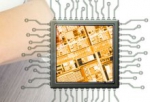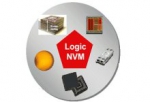D&R Industry Articles (November 2014)
Articles for the Week of November 24, 2014

Effective Optimization of Power Management Architectures through Four standard "Interfaces for the Distribution of Power"
This article suggests an innovative approach to build an optimal PMNet per application requirements, based on the definition of four standardized voltage levels (further defined as Interfaces for the Distribution of Power). Finally, it demonstrates the advantages of this approach from which regulator suppliers or designers, SoC integrators and system makers can benefit.- Motor Control for Computer Architects
- Slash SoC power consumption in the interconnect
- Safeguard your FPGA system with a secure authenticator
- Creating core independent stimulus in a multi-core SoC verification environment
- Real-Time Trace: A Better Way to Debug Embedded Applications
Articles for the Week of November 17, 2014

I-fuse OTP - The OTP of Choice
OTP stands for “One-Time Programmable”, a device that can only be programmed once to permanently store any kind of information (data for chip IDs, security keys, product feature selection, memory redundancy, device trimming, or MCU code memory). Every chip needs OTPs, as long as they are reliable, available, and affordable.- Is the Market ready to conquer PCIe 4.0 challenges ?
- A Method to Quickly Assess the Analog Front-End Performance in Communication SoCs
- Using sub-gigahertz wireless for long range Internet of Things connectivity
Articles for the Week of November 10, 2014
Additional Articles- Silicon platform optimization: A top-down methodology
- Reaping the benefits of architectural modeling in embedded design
Articles for the Week of November 3, 2014

Designing for the Future: The I6400 MIPS CPU Core
Streaming media, cloud services, wearables, Internet of things (IoT), Software Defined Networks (SDN), Network Function Virtualization (NFV), and Big Data are all relatively new terms in the high-tech industry. However, these terms represent changes in the way data is collected, transmitted, and processed. In addition, the cumulative effect of the impact of the technology behind these terms represents an increasing rate of change and challenges designing solutions to keep pace.








